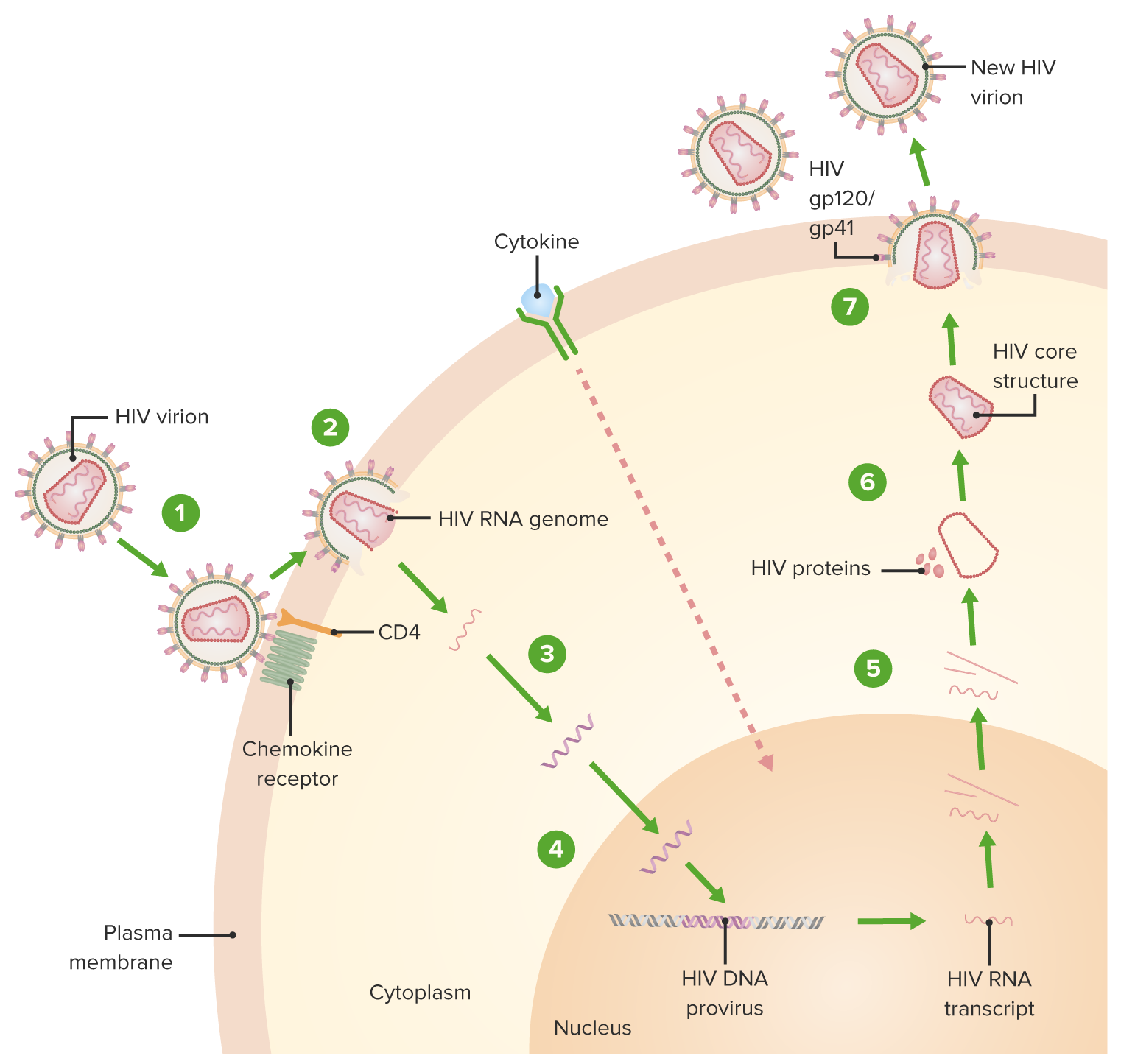Playlist
Show Playlist
Hide Playlist
Anti-HIV Agents: Nucleotide Reverse Transcriptase Inhibitors (NtRTIs) – Antiviral Drugs
-
Slides Anti-HIV Agents NtRTIs Antiviral Drugs.pdf
-
Reference List Pharmacology.pdf
-
Download Lecture Overview
00:02 Next, we have the nucleotide reverse transcriptase inhibitors or the NtRTIs. 00:10 Now, when we talk about these drugs we have many but I'm gonna mention mostly tenofovir. 00:17 Go to nih.gov when you're looking at these drugs for the most recent regimens in terms of HAART therapy and multi-dose regimen therapy. 00:27 Tenofovir is used in both hepatitis and HIV but it’s also used in needle stick prophylaxis. 00:35 This medication can be used in pregnancy which makes it particularly useful. 00:40 I will say that I know many of my colleagues have actually been on this medication after they’ve had a needle stick injury. It is excreted renally. 00:48 It is a prodrug and it is converted to the active form of the drug usually as a triphosphate. 00:56 When it’s taken with high fat foods the area under the curve of the pharmacologic profile is actually increased. 01:05 So remember, when you're talking to your patients the diet is going to be important when you're giving this medication. 01:11 Drug interactions are certainly there. It increases the concentration of other HIV agents so you have to be very careful and also this drug is associated with pancreatitis. 01:24 When it’s used in combination with other drugs the risk of pancreatitis actually goes up. 01:29 It decreases the concentration of certain types of drugs called protease inhibitors which we’re going to talk about later in the series and it may impede the clearance of acyclovir in some of our patients as well. 01:45 Toxicity can include nausea, rash, diarrhea. 01:48 You can get pain, you can get depression, you can get headaches, you can also have weakness with this medication. 01:56 There's often high blood lactate so you have to watch the serum lactate level as part of your panel when you're monitoring these patients. 02:03 Watch out also for hepatomegaly and again Fanconi syndrome. 02:08 So this is going to come up. 02:09 Fanconi is an important syndrome that we have to learn about. 02:13 You have to sort of memorize what the criteria are and then when you get these in the exams you'll be able to recognize it. 02:20 We're going to actually do a question later on so that’ll help us remember. 02:25 Neurological includes headache, insomnia and fatigue. 02:30 Now we've been talking about tenofovir disoproxil. 02:32 There’s another kind of tenofovir that has a slightly different structure to it, it’s called tenofovir alafenamide. 02:44 It’s also used in HIV and in hepatitis. 02:48 It has greater antiviral activity than the previous drug. 02:51 It has better lymphoid tissue penetration which is going to be very important and of course, we do show that these patients have a similar profile of activity with fewer side effects. 03:05 It’s often given as a component to many fixed dose combination products so when we purchase these medications - in my country we have a socialized health care system so the hospitals are actually purchasing it, but they often come in a combined package with other medications as part of the HAART therapy protocol. 03:26 Interaction - it can increase the concentrations of other drugs which can lead to increased rates of pancreatitis and peripheral neuropathy. 03:36 It can decrease the concentration of protease inhibitors and we're going to talk about protease inhibitors later.
About the Lecture
The lecture Anti-HIV Agents: Nucleotide Reverse Transcriptase Inhibitors (NtRTIs) – Antiviral Drugs by Pravin Shukle, MD is from the course Antimicrobial Pharmacology.
Included Quiz Questions
Which statement regarding tenofovir disoproxil is false?
- It is unsafe for use during pregnancy.
- It is used to treat both hepatitis and HIV.
- It is renally excreted and may impede the clearance of acyclovir.
- When taken with fatty foods, the area under the curve is increased by 40%.
- It is a prodrug in the class of nucleotide reverse transcriptase inhibitors.
Which statement regarding tenofovir alafenamide is false?
- It has similar antiviral activity but more side effects than tenofovir disoproxil.
- Compared with tenofovir disoproxil, it has better lymphoid tissue penetration.
- Like tenofovir disoproxil, it can increase the concentration of didanosine and certain other drugs.
- Like tenofovir disoproxil, it can decrease the concentrations of protease inhibitors.
- It can be used in the treatment of both HIV and hepatitis.
Customer reviews
5,0 of 5 stars
| 5 Stars |
|
5 |
| 4 Stars |
|
0 |
| 3 Stars |
|
0 |
| 2 Stars |
|
0 |
| 1 Star |
|
0 |





